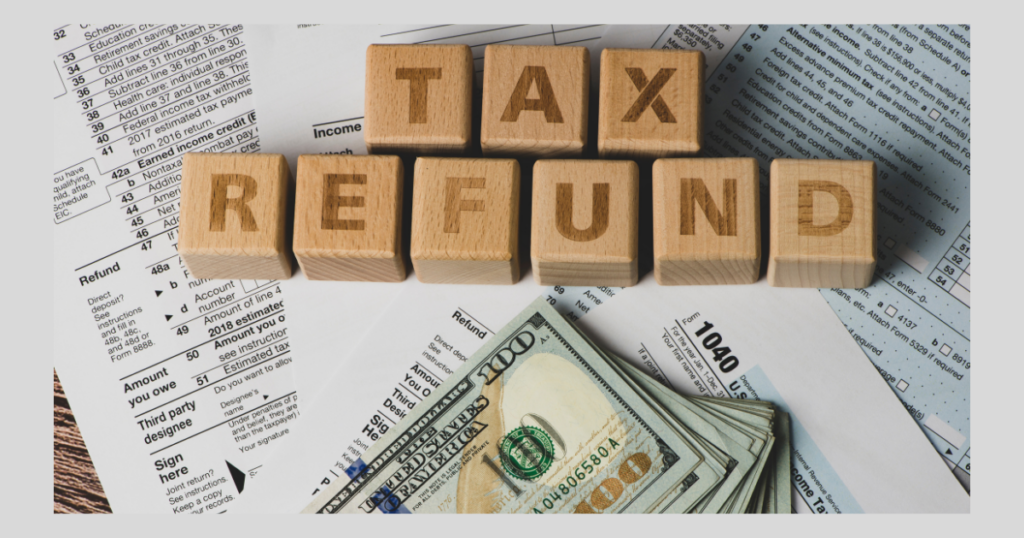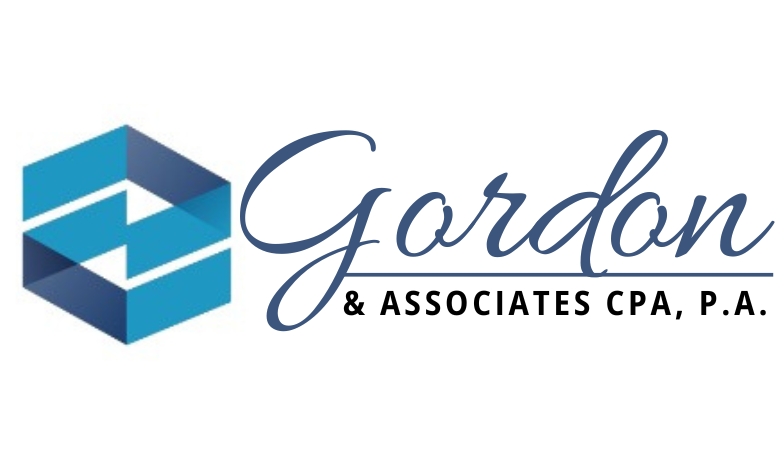Maximizing Your Tax Refund:
Strategies for Individuals and Businesses

For many individuals and business owners, receiving a tax refund is an opportunity to reinvest in their financial future. However, maximizing your tax refund requires strategic planning throughout the year, not just at tax time. Whether you’re looking to boost your personal refund or increase your business’s financial return, there are several strategies you can implement to lower your taxable income and take advantage of available deductions and credits.
In this blog, we’ll explore effective strategies for both individuals and businesses to maximize their tax refund and keep more money in their pocket.
1. Contribute to Tax-Advantaged Retirement Accounts
One of the easiest ways to reduce your taxable income and boost your refund is by contributing to tax-advantaged retirement accounts. Contributions to certain retirement accounts, such as a 401(k) or Traditional IRA, are tax-deductible, which can lower your taxable income and help you save for the future.
- For Individuals: If you contribute to a Traditional IRA, you can deduct up to $7,000 in 2024 ($8,000 if you’re 50 or older). If you have access to a 401(k) plan through your employer, you can contribute up to $23,000 in 2024 ($30,500 for those 50 and older).
- For Self-Employed Individuals: Consider setting up a SEP IRA or Solo 401(k). These plans allow you to make larger contributions, up to $66,000 in 2024, which can provide a significant reduction in taxable income.
By maximizing contributions to retirement accounts, you reduce the amount of income that is subject to taxes, resulting in a higher refund when you file your taxes.
2. Take Advantage of Tax Credits
Tax credits are powerful tools for reducing the amount of tax you owe because they provide a dollar-for-dollar reduction of your tax liability. Some credits are refundable, meaning they can increase your refund, while others are non-refundable but still lower the amount of taxes you owe.
Popular Tax Credits for Individuals
- Earned Income Tax Credit (EITC): This credit is available to low- to moderate-income working individuals and families. It’s refundable, meaning if the credit exceeds your tax liability, you’ll receive the remaining amount as a refund.
- Child Tax Credit: If you have dependent children, you may qualify for the Child Tax Credit, which is partially refundable.
- Education Credits: The American Opportunity Tax Credit (AOTC) and Lifetime Learning Credit provide tax savings for eligible education expenses, such as tuition and course materials.
Tax Credits for Businesses
- Work Opportunity Tax Credit (WOTC): Businesses that hire individuals from certain target groups, such as veterans or long-term unemployed individuals, may qualify for the WOTC, which provides a credit of up to $9,600 per eligible employee.
- Research and Development (R&D) Tax Credit: This credit is available to businesses that invest in research and innovation. It can offset payroll taxes for qualifying small businesses.
By understanding and applying for all the credits you’re eligible for, both as an individual and as a business owner, you can significantly increase your tax refund.
3. Maximize Deductions by Keeping Detailed Records
To maximize your refund, you need to take advantage of all the tax deductions you’re eligible for, which requires careful record-keeping throughout the year. Deductions reduce your taxable income, meaning a lower tax bill and potentially a higher refund.
Common Deductions for Individuals
- Charitable Contributions: If you make donations to qualified charities, keep receipts to claim them as deductions. You can deduct cash donations, as well as non-cash donations such as clothing or household items.
- Medical Expenses: If your medical expenses exceed 7.5% of your adjusted gross income (AGI), you can deduct the excess. Be sure to keep receipts for out-of-pocket medical expenses, prescriptions, and other healthcare costs.
- Mortgage Interest: If you own a home, mortgage interest can be a significant deduction. You can also deduct state and local property taxes.
Common Deductions for Businesses
- Business Expenses: Keep records of all business-related expenses, such as office supplies, rent, utilities, and business travel. These expenses can often be deducted from your business’s taxable income.
- Home Office Deduction: If you work from home, you may be able to deduct a portion of your home expenses, including utilities, internet, and rent or mortgage interest.
- Vehicle Expenses: If you use your vehicle for business purposes, keep detailed records of mileage and maintenance expenses. You can deduct these costs, either by using the IRS standard mileage rate or actual expenses.
Good record-keeping ensures that you won’t miss out on deductions that can increase your refund.
4. Time Your Income and Expenses Strategically
Another effective strategy to maximize your refund is timing your income and expenses to your advantage. For example, if you’re close to reaching a higher tax bracket, you may want to defer income until the next tax year or accelerate deductible expenses into the current year to reduce your taxable income.
For Individuals
- Accelerate Charitable Contributions: If you expect to be in a higher tax bracket next year, consider making charitable contributions before December 31st to claim the deduction in the current tax year.
- Prepay Medical Expenses: If you’re close to the threshold for deducting medical expenses, you can prepay some expenses to meet the 7.5% of AGI requirement.
For Businesses
- Prepay Business Expenses: If your business had a profitable year, you can reduce taxable income by prepaying for services or supplies you’ll need in the following year.
- Defer Income: If your business expects a higher income next year, you may want to delay invoicing customers until January to defer that income to the next tax year.
By strategically managing when you receive income or incur expenses, you can lower your taxable income for the current year and potentially increase your refund.
5. Invest in Your Business
For business owners, investing in your company can result in significant tax savings. The IRS offers incentives for businesses to invest in equipment, technology, and other capital assets.
- Bonus Depreciation and Section 179: The Section 179 deduction allows businesses to deduct the full cost of certain qualifying property, such as equipment, in the year it’s purchased. Additionally, the IRS allows bonus depreciation, which enables businesses to deduct a percentage of the cost of qualified property immediately.
By investing in new equipment or assets for your business, you can take advantage of these deductions and potentially increase your refund.
6. Adjust Your Withholding
One of the easiest ways to ensure you receive the maximum refund is by adjusting your tax withholding with your employer. If you receive a large refund each year, it may be because too much tax is being withheld from your paycheck. While a large refund can be a nice bonus, it essentially means you’ve been giving the government an interest-free loan throughout the year.
By adjusting your withholding to more accurately reflect the amount of tax you owe, you can increase your take-home pay throughout the year and reduce the likelihood of overpaying taxes. You can update your withholding by completing a new W-4 form with your employer.
7. Review Your Filing Status
As mentioned earlier, choosing the correct filing status is crucial for maximizing your refund. If your marital or family situation changes during the year, you may be eligible for a different filing status that offers better tax advantages. For example:
- If you’re unmarried but supporting a dependent, you may qualify for Head of Household, which offers a higher standard deduction and lower tax rates than filing as Single.
Similarly, married couples can evaluate whether filing Married Filing Jointly or Married Filing Separately offers the best refund.
8. Take Advantage of Tax Software or a Professional CPA
Finally, consider using tax software or working with a Certified Public Accountant (CPA) to ensure you’re taking full advantage of every tax deduction and credit available to you. Tax professionals can help you navigate complex tax laws, find additional savings opportunities, and avoid costly mistakes that could reduce your refund.
Maximizing your tax refund requires a strategic approach that involves keeping accurate records, taking advantage of tax credits and deductions, and planning your finances carefully throughout the year. By using these strategies, individuals and business owners alike can increase their refund and put more money back into their savings or business growth.
At Gordon & Associates CPA, P.A., we specialize in tax planning and preparation services to help you maximize your tax refund. Contact us today to learn how we can assist you with your tax needs and help you get the most out of your refund.
Subscribe to our newsletter to receive our latest blog directly to your inbox.




